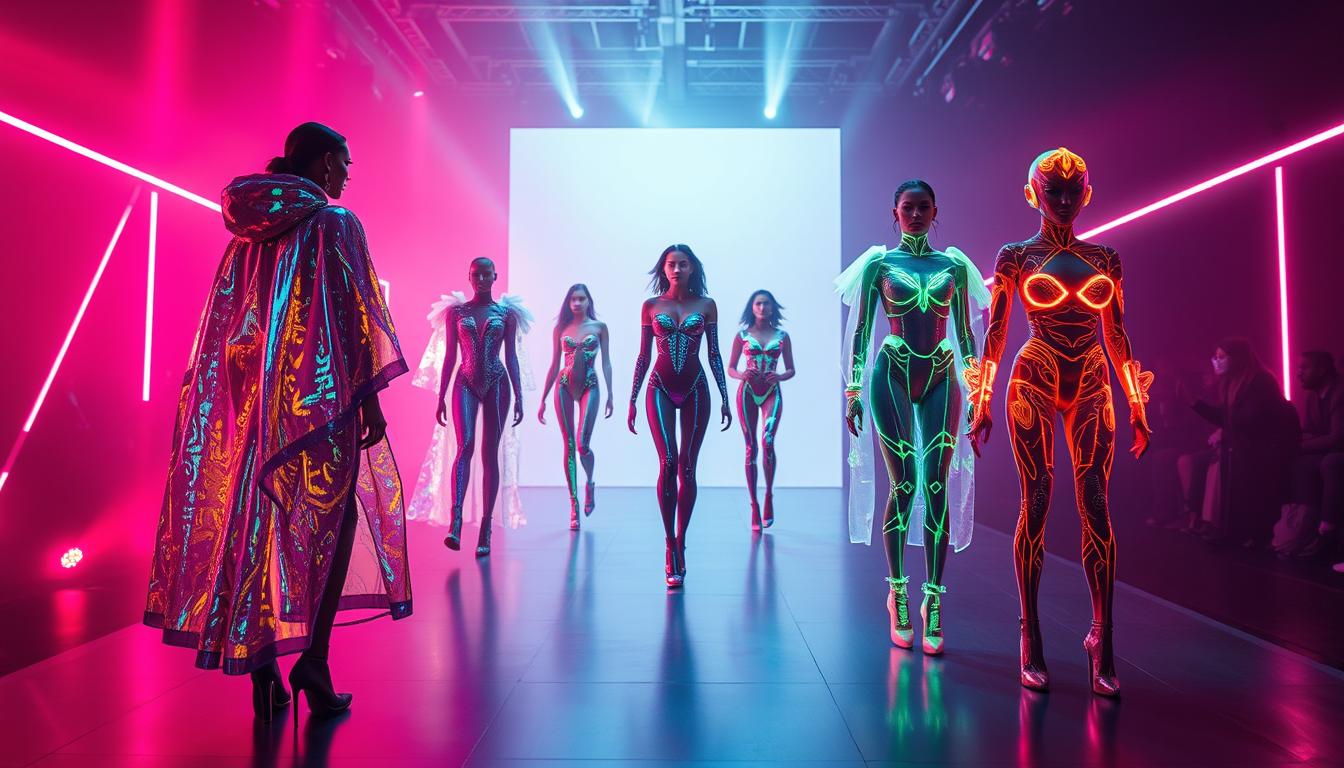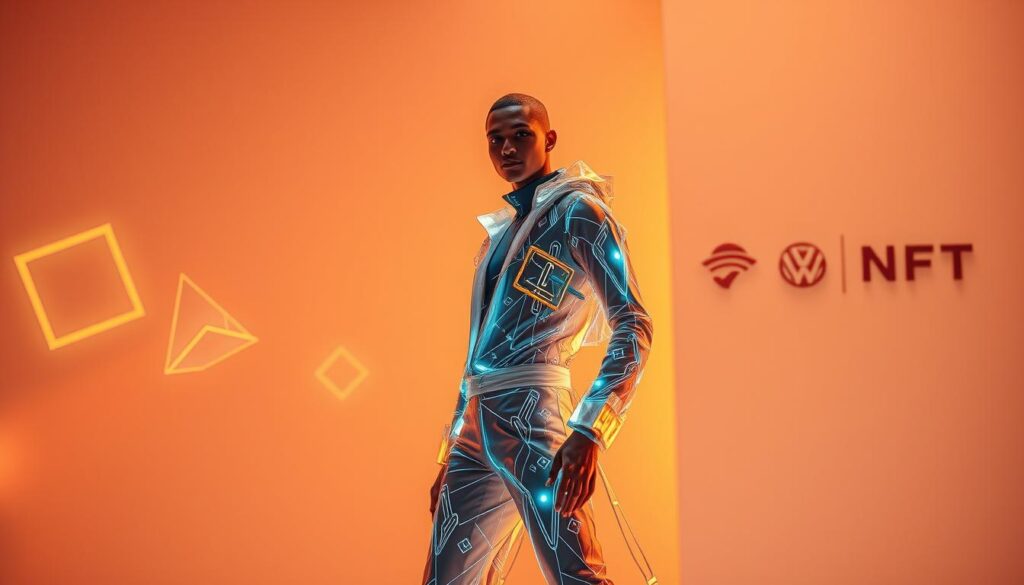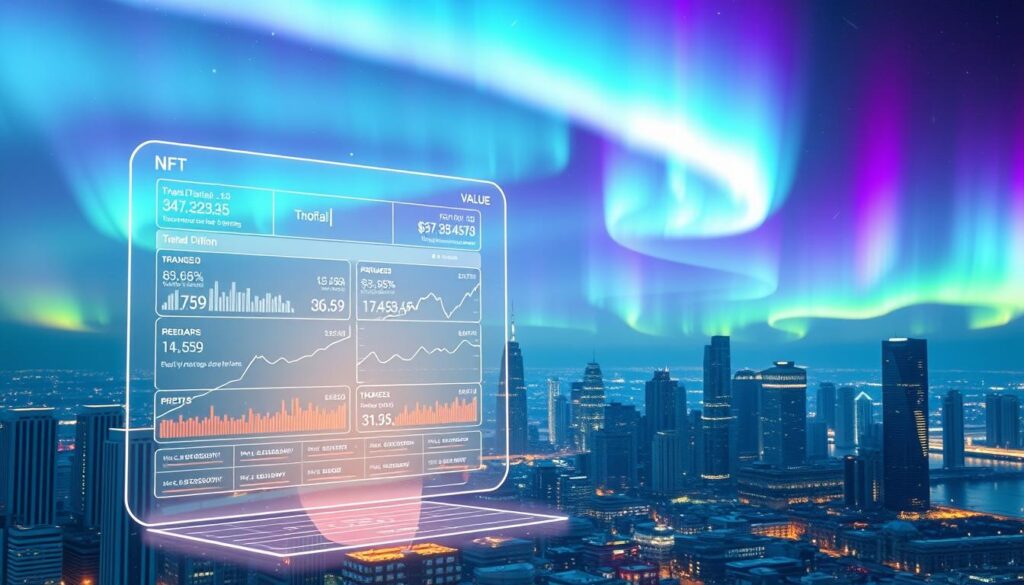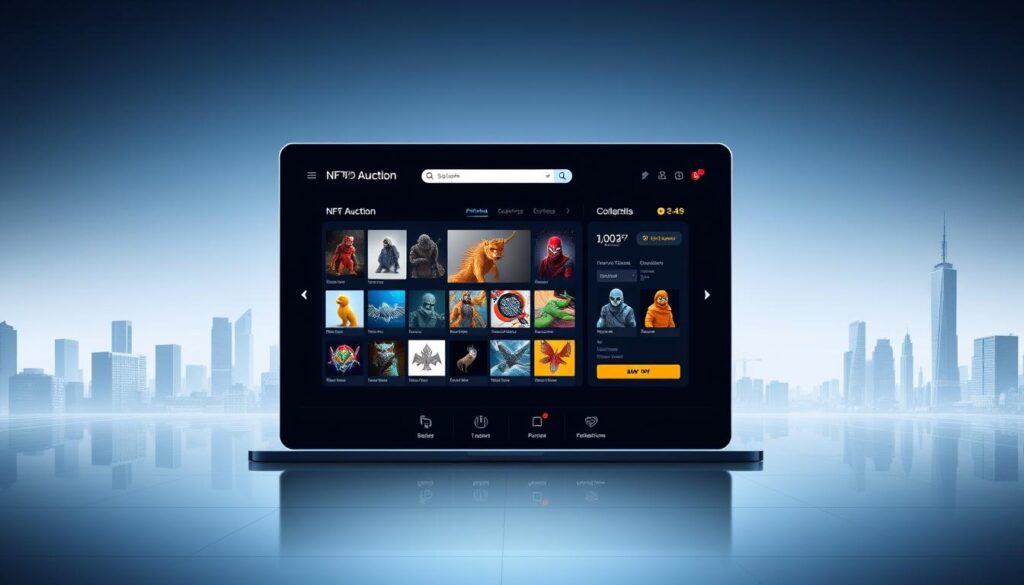Now Reading: NFT Fashion Digital Wearable Items: The Future of Style
- 01
NFT Fashion Digital Wearable Items: The Future of Style
NFT Fashion Digital Wearable Items: The Future of Style

The landscape of personal expression is undergoing a remarkable transformation. Blockchain technology is revolutionising how we think about ownership and creativity in the style industry. This shift represents one of the most exciting developments in contemporary culture.
Global sales of non-fungible tokens have seen explosive growth, reaching staggering figures that highlight their increasing significance. The market capitalisation for these unique assets has expanded dramatically, demonstrating substantial consumer interest and investment.
Luxury brands and independent creators are now leveraging this technology to produce exclusive virtual apparel and accessories. These innovations allow for new forms of identity expression that transcend physical limitations. The possibilities extend across various digital environments and platforms.
This guide explores how blockchain-secured assets are creating unprecedented opportunities for designers, collectors, and enthusiasts alike. The convergence of technology and personal style is reshaping the entire industry landscape.
Key Takeaways
- The market for blockchain-based style assets has experienced significant growth in recent years
- Luxury brands are increasingly adopting this technology for exclusive collections
- These digital creations offer new ways for personal expression and identity
- Ownership verification through blockchain ensures authenticity and scarcity
- The technology bridges physical and virtual ownership experiences
- Creative opportunities extend beyond traditional industry boundaries
- This represents a fundamental shift in how we engage with style and ownership
Introduction to NFT Fashion Digital Wearable Items
Personal style is evolving beyond physical boundaries through cryptographic verification. These unique tokens represent ownership of creative content secured by blockchain technology.
Blockchain ensures each piece remains authentic and scarce. The technology provides traceable ownership records that cannot be altered.
Designers and labels can sell exclusive assets directly to consumers. They bypass traditional intermediaries using specialised marketplaces. This creates new revenue streams and creative freedom.
The three main categories include virtual apparel for metaverse avatars. Augmented reality outfits for filters and games also exist. Phygital combinations merge digital ownership with physical garments.
| Feature | Traditional Fashion | Blockchain-Based Fashion | Creative Advantage |
|---|---|---|---|
| Ownership Proof | Receipts & Certificates | Blockchain Verification | Permanent & Tamper-Proof |
| Creative Limits | Physical Materials | 3D Models & Animation | Unlimited Possibilities |
| Market Access | Physical Stores | Global Digital Marketplaces | 24/7 Availability |
| Exclusivity | Limited Production Runs | Algorithmic Scarcity | Provably Rare Collections |
This technology unlocks unprecedented creative possibilities. Designers can experiment with interactive elements impossible in physical garments. The rise of digital fashion ownership represents more than collectibles.
Limited-edition collections offer blockchain-verified exclusivity. Some pieces include access to future perks and exclusive events. Pioneering examples demonstrate significant market value and collector interest.
The Evolution of Digital Fashion
Creative expression through clothing has transformed dramatically with each technological leap. From the sewing machine’s invention to smart textiles, innovation has consistently reshaped the fashion industry.
![]()
Transition from Traditional to Digital Couture
This evolutionary shift represents a fundamental change in how designers approach creation. They now operate without the physical limitations of the real world.
Material properties and functional requirements no longer constrain creative vision. Designers can experiment with shapes and colours impossible in traditional garments.
The rise of virtual platforms has accelerated these trends. Avatars require complete wardrobes, while augmented reality projects digital creations onto physical bodies.
This transformation extends beyond technical changes to cultural redefinition. The world digital fashion ecosystem challenges conventional notions of ownership and wearability.
Creative professionals have adapted their processes significantly. They now work with 3D modelling tools instead of physical fabrics, revolutionising design methodology across the global fashion landscape.
Technological Innovations Empowering Digital Wearables
Innovative technical solutions are fundamentally altering the landscape of personal adornment and ownership verification. These breakthroughs create new possibilities for creative expression and commercial transactions.
Blockchain Integration and Smart Contracts
Blockchain technology serves as the foundation for secure ownership records. It provides immutable certificates that combat counterfeiting in luxury markets.
Smart contracts automate royalty payments to creators during secondary sales. This system supports sustainable revenue streams for ongoing creative development.
| Technology Feature | Traditional Approach | Blockchain Solution | Key Advantage |
|---|---|---|---|
| Ownership Verification | Paper Certificates | Digital Ledger | Tamper-Proof Records |
| Creator Compensation | One-Time Payment | Automated Royalties | Lifetime Earnings |
| Authentication | Physical Inspection | Algorithmic Verification | Instant Validation |
| Market Access | Geographic Limits | Global Availability | 24/7 Transactions |
Augmented Reality and Metaverse Showrooms
Augmented reality technology projects virtual garments onto physical bodies. This blends digital creations with real-world experiences seamlessly.
Metaverse showrooms represent revolutionary retail spaces. Brands establish immersive presence in environments like Decentraland and Roblox.
These virtual spaces allow customers to explore collections in real-time. The technology enables interactive experiences that transcend physical limitations.
Non-fungible tokens serve as gateways to metaverse experiences. Users can display their assets in games and social spaces, expanding creative possibilities.
Exploring NFT Fashion Digital Wearable Items in the Digital Age
Virtual environments revolutionise how individuals showcase their unique aesthetic preferences. These creative pieces appear across three main contexts: metaverse platforms, social media displays, and augmented reality experiences.

Each context offers distinct advantages for personal expression. Metaverse worlds allow complete avatar customisation with specialised outfits. Social platforms enable users to display their virtual wardrobe as profile content.
| Application Context | Primary Use | Key Features | User Experience |
|---|---|---|---|
| Metaverse Platforms | Avatar Customisation | 3D Rendering, Interactivity | Immersive Virtual Presence |
| Social Media Display | Profile Enhancement | Static/Dynamic Visuals | Content Sharing & Engagement |
| Augmented Reality | Real-World Integration | Body Projection, Filters | Blended Physical/Digital Experience |
Leading platforms like RTFKT Studios create virtual sneakers and clothing collections. DressX enables try-on experiences while The Fabricant produces hyper-realistic 3D garments. Auroboros designs bespoke pieces inspired by nature and technology.
Brands leverage blockchain technology to launch limited-edition collections. These offerings provide verified exclusivity and build value through scarcity. The creative possibilities extend beyond traditional physical limitations.
This expansion represents a fundamental shift in personal adornment. It blends technology, creativity, and community within the evolving ecosystem of virtual expression.
Impact on Brand Storytelling and Consumer Engagement
Blockchain-based style assets are redefining the very essence of brand-consumer relationships. These tokens enable brands to craft immersive narratives and foster unprecedented loyalty.
They move beyond simple transactions to create meaningful, ongoing connections.

Phygital Fashion Experiences
A key innovation is the rise of phygital experiences. This approach merges a tangible garment with a unique digital certificate of ownership.
Customers receive both a physical product and its virtual twin. This strategy captures attention across the real world and online spaces simultaneously.
It blurs the lines between physical and digital possession, creating a more holistic ownership experience.
Building Loyal Communities through NFTs
These digital assets are powerful tools for community building. Fashion brands use them to power exclusive loyalty programmes.
Token holders often gain access to:
- Early product releases
- Invite-only virtual events
- Members-only content and perks
This transforms customers into an active, invested community. It significantly increases customer lifetime value.
Limited-edition drops generate excitement and urgency. This buzz amplifies brand awareness across social media and specialised marketplaces.
This approach offers innovative ways for labels to stand out. It creates memorable experiences that resonate deeply with modern audiences.
Benefits and Opportunities for Fashion Brands in the Digital Space
The adoption of virtual apparel creation presents significant advantages for contemporary labels. This new paradigm offers innovative ways for companies to enhance profitability while championing environmental responsibility.

Cost-Effective Innovation in Design
Digital design grants creators true creative freedom. They can experiment with avant-garde concepts for shoes and clothing without costly physical sample development.
This process dramatically reduces financial risk. Brands can test bold ideas before committing to production.
Sustainability emerges as a major benefit. Virtual garments eliminate the pollution and resource consumption of physical manufacturing.
This alignment with responsible practices strongly appeals to modern, conscious consumers. It represents a fundamental shift in operational ethics.
These brands also gain access to younger, digitally-native audiences. They can establish a presence in virtual environments where traditional clothing has limited reach.
Blockchain verification protects against counterfeiting, safeguarding brand reputation. Virtual try-on technology using digital versions of collections reduces return rates, streamlining the purchasing process for everyone.
Emerging Trends and Virtual Runway Experiences in Digital Fashion
Major labels are embracing gaming platforms as the new frontier for style innovation. Virtual runway shows now present collections in impossible settings that defy real world physics.
Virtual Sneaker Drops and Interactive Advertising
RTFKT Studios pioneered the virtual sneaker phenomenon, creating digital shoes that sell for thousands. These collectible assets trade in secondary markets much like limited-edition physical footwear.
Nike’s acquisition of RTFKT demonstrates the strategic importance of digital sneakers. They design specialised shoes for avatars across various online platforms.
Gaming environments host immersive brand experiences where players could dress characters in luxury outfits. Gucci created Roblox integrations offering virtual Gucci collections for avatar customisation.
Balenciaga partnered with Fortnite to create character skins, while Ralph Lauren built winter village experiences. H&M’s Looptopia focuses on sustainability with outfits made from recycled materials.
Interactive advertising campaigns represent another significant trend. Gamified marketing and augmented reality storytelling create deeper engagement than traditional formats.
These developments signal future fashion industry directions where digital and physical experiences intertwine. Games become primary retail channels for younger consumers seeking creative expression.
Crafting a Successful NFT Fashion Collection
The journey from creative vision to market-ready collection involves several critical decision points. Creators must balance artistic expression with practical business considerations to achieve meaningful results.
Design, Minting and Pricing Strategies
Successful projects begin with strong creative concepts. Designers choose between purely virtual garments or phygital combinations that bridge physical and digital realms.
Technical implementation requires selecting appropriate blockchain platforms and professional design tools. The minting process transforms creative work into verifiable assets through specialised marketplaces.
Pricing strategy significantly impacts market reception. Creators analyse comparable sales data to establish appropriate valuations. They choose between fixed-price listings and auction formats based on their goals.
Effective Digital Marketing and Partnerships
Building anticipation through social media campaigns creates essential momentum. Engaging Web3 communities on platforms like Discord fosters genuine collector interest.
Strategic collaborations with other artists or established labels expand visibility dramatically. Co-branded collections and limited capsule drops generate excitement while building foundations for future fashion innovation.
These partnerships help creators maintain relevance in the real world while exploring new creative frontiers. The right marketing approach transforms technical development into commercial success.
Overcoming Legal and Compliance Challenges in NFT Fashion
Compliance requirements create complex challenges for companies entering the tokenised style market. Brands must address multiple legal dimensions when launching blockchain-based collections.
These considerations span intellectual property protection, regulatory classification, and data privacy obligations. A comprehensive approach ensures sustainable market presence.
Intellectual Property and Regulatory Considerations
Unauthorised use of protected content represents the most common legal risk. Third-party logos, celebrity likenesses, and trademarked patterns require proper licensing.
Specialised legal counsel should review all creative assets before minting. This due diligence prevents costly litigation and protects brand reputation.
Regulatory classification varies significantly across jurisdictions. Some tokens may qualify as securities under specific circumstances.
The U.S. Securities and Exchange Commission has indicated certain structures might fall under securities law. Companies must assess their offerings against local regulations.
| Legal Area | Primary Risk | Mitigation Strategy | Compliance Priority |
|---|---|---|---|
| Intellectual Property | Copyright Infringement | Licensing Agreements | High |
| Regulatory Classification | Securities Violations | Legal Structure Analysis | Medium-High |
| Data Privacy | GDPR Non-Compliance | Limited On-Chain Data | Medium |
| Environmental Impact | Reputational Damage | Efficient Blockchain Selection | Medium |
Privacy concerns arise from permanent blockchain visibility. Personal data storage requires careful consideration under regulations like GDPR.
Environmental practices also influence consumer perception. Energy-efficient platforms help address sustainability concerns within the industry.
These comprehensive strategies build trust while navigating this evolving space.
Leveraging Social Media and Digital Marketplaces for Digital Fashion
The intersection of social platforms and virtual commerce creates unprecedented opportunities for style innovation. These channels have become essential infrastructure for building engaged communities around creative collections.
Optimising Online Presence
Strategic use of social media drives visibility and engagement for style enterprises. Platforms like Twitter and Instagram enable brands to showcase outfits and accessories in compelling ways.
Professional presentation of digital versions helps capture audience attention. Consistent branding across channels builds recognition and trust.
Marketplaces like OpenSea and specialised platforms offer organised shopping experiences. They provide secure environments for discovering unique clothing and shoes.
Engaging Younger Audiences
Younger demographics discover style through media channels rather than traditional outlets. Authentic social media presence resonates with Gen Z and Millennial values.
Collaboration with digital-native influencers creates shareable content. Virtual showrooms complement these efforts by offering immersive experiences.
This multi-platform approach drives measurable success for designers navigating the evolving landscape. It establishes foundations for future style innovation.
Conclusion
This technological revolution redefines the fundamental relationship between creators, consumers, and their wardrobes. The world digital fashion ecosystem represents more than collectibles—it signals a significant shift in how businesses engage customers.
Virtual try-ons and size-inclusive clothing offer immersive experiences beyond physical limitations. Designers enjoy unprecedented creative freedom while brands connect with younger audiences through innovative ways.
The future fashion landscape blends purely virtual outfits with phygital combinations. While challenges around regulations and sustainability persist, industry best practices continue to evolve.
This exciting evolution encourages exploration and experimentation. It represents comprehensive transformation rather than replacement of traditional approaches.
FAQ
What exactly are digital wearable items?
Digital wearable items are virtual clothing, accessories, or shoes that exist purely online. You can use them to dress your avatar in video games, social media platforms, or metaverse environments. They are owned as unique digital assets, often secured by blockchain technology.
How does a brand benefit from creating these virtual goods?
Brands like Gucci and Nike use these items to reach new, tech-savvy audiences. It allows for creative experimentation without the material costs of physical production. This approach can build strong community engagement and open fresh revenue streams in the digital space.
Can I wear my digital sneakers in the real world?
Not physically, but through augmented reality (AR) technology. Some companies offer experiences where you can see a digital version of your sneakers overlaid on your feet through your phone’s camera. This creates a ‘phygital’ link between the virtual and real worlds.
What is the role of sustainability in this trend?
Digital apparel offers a more sustainable alternative by eliminating fabric waste, water usage, and shipping emissions associated with traditional manufacturing. It represents a significant shift towards more eco-conscious practices within the broader industry.
Where can I buy or view these collections?
You can find them on specialised digital marketplaces, within certain video games, or through brand-specific virtual showrooms. Brands often promote new drops on their social media channels, making it easy to stay updated on the latest trends.
Are there any legal considerations when purchasing these items?
Yes. It’s crucial to understand the intellectual property rights attached. The purchase typically grants you ownership of that specific digital asset, but not the rights to reproduce the design. Always review the terms and conditions provided by the brand.














